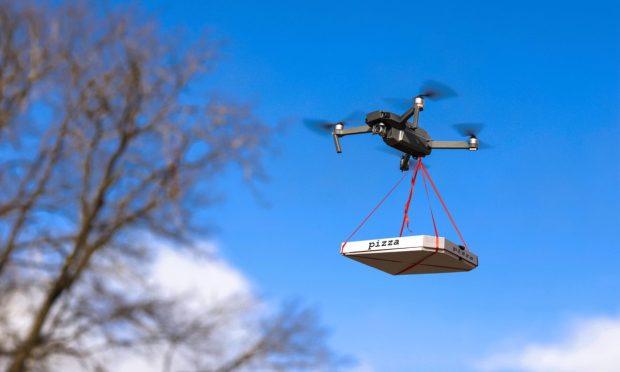Flytrex CEO Touts 50% Consumer Retention in Drone Delivery Test

As restaurants test the viability of drone delivery, it seems consumers are on board.
Flytrex, a drone delivery service that has partnered with major companies including Chili’s parent Brinker International and consumer packaged goods (CPG) giant Unilever, is seeing high loyalty levels a year into its first test in Holly Springs, North Carolina, as co-founder and CEO Yariv Bash noted in an interview with PYMNTS.
“In Holly Springs, the first town we started operating in, a year after, we’ve managed to penetrate close to 60% of the households within range, so that means more than half the households downloaded the app and made at least one order,” Bash said. “One year after we started, we’re at roughly 50% retention — 50% of the households keep using the service. If you compare that to any other on-demand service, it’s exceptionally great.”
Bash added that drone delivery has been taking “baby steps” toward “real-world commercialization,” with 21,000 deliveries in five locations last year.
In addition to Chili’s, major restaurant brands including Starbucks, Domino’s and Pizza Hut have tried out drone delivery, as has the United States’ top restaurant delivery aggregator, DoorDash.
Certainly, there is need among both restaurants and aggregators for solutions to make on-demand deliveries more affordable. PYMNTS research found that consumers opt for pickup from restaurants far more than delivery, but much of the reason they abstain from the latter comes down to cost.
According to data from PYMNTS’ new study “Connected Dining: Rising Costs Push Consumers Toward Pickup,” for which we surveyed more than 2,100 U.S. consumers, nearly half of all restaurant meals are purchased for off-premise consumption. However, the vast majority of these — 80% — are pickup orders.
Yet delivery’s share would be much larger if it were not for consumers’ cost concerns. Research from PYMNTS’ 2022 Restaurant Friction Index found that the main reason that consumers who do not use delivery aggregators abstain is that they are unwilling to pay the delivery or service fee, and 26% steer clear because they consider aggregators to be too expensive.
Consequently, automated tech solutions that cut down the labor of delivery, including robots such as drones, could be key to restaurants’ ability to make more delivery sales.
“We charge a lot less both from the end customer and partnered restaurants,” Bash said. “If you think about the suburbs, you’re actually using a human in a one-ton car to deliver a quarter pounder, which is pretty crazy, and once you replace that with an autonomous robotic vehicle, it’s a lot more affordable.”
Indeed, drone delivery could become more widespread soon. Recently, the Federal Aviation Administration (FAA) approved Flytrex for a certification that will enable nationwide long-range delivery when the technology is ready. Bash noted that this marks only the fifth such approval granted, with the prior four recipients being Google, Amazon, UPS and Zipline.
“I suspect that during 2023-2024 we’ll start seeing larger and larger deployments of drone systems throughout the U.S.,” Bash said, “and hopefully within a few years, it will become the standard for on-demand delivery.”
